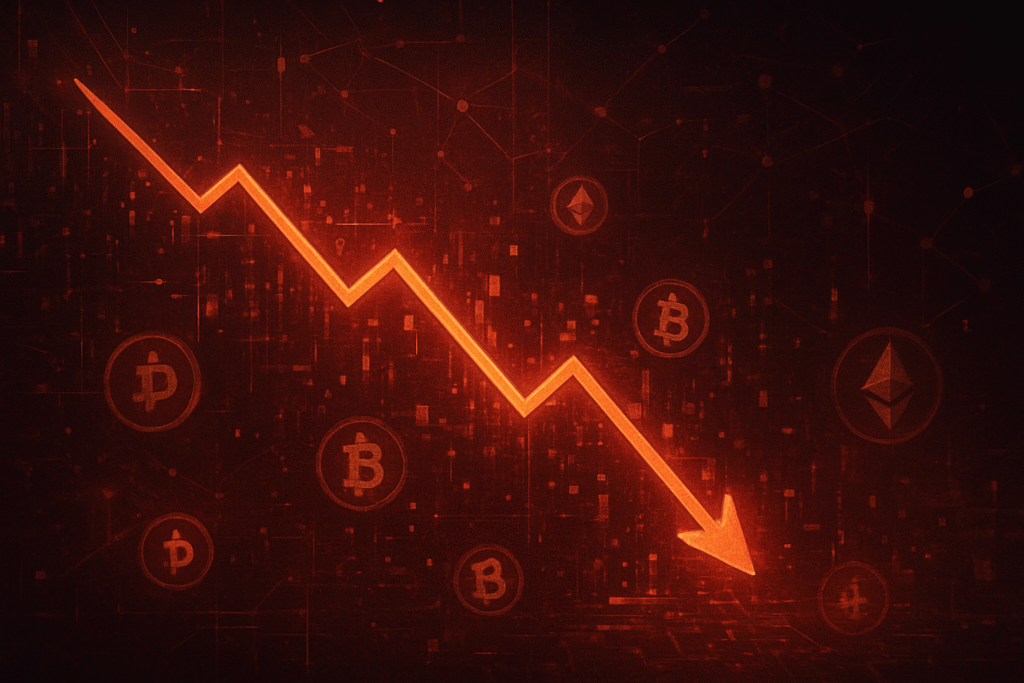
The cryptocurrency market, known for its exhilarating highs and precipitous lows, is fundamentally driven by investor psychology. While much attention is often paid to periods of "greed" and parabolic rallies, understanding "weak sentiment" – a pervasive mood of fear, pessimism, and uncertainty – is equally crucial for investors, projects, and the broader Web3 ecosystem. As of November 24, 2025, the principles of market sentiment remain a cornerstone of crypto analysis, offering vital clues into potential market bottoms, capitulation events, and the strategic shifts necessary for survival and growth.
Weak sentiment signifies a collective lack of confidence, often leading to reduced demand, increased selling pressure, and a general "risk-off" attitude. This matters profoundly for the crypto ecosystem because, unlike traditional markets with deep-rooted fundamentals and extensive regulatory oversight, cryptocurrencies are highly susceptible to emotional swings. These periods act as stress tests, exposing vulnerabilities, flushing out unsustainable projects, and ultimately shaping the long-term trajectory of digital asset adoption and innovation.
Market Impact and Price Action
The most immediate and discernible effect of weak sentiment is a pronounced downward pressure on crypto asset prices. Fearful investors tend to liquidate their holdings, leading to widespread sell-offs that can quickly cascade into significant market corrections or even prolonged bear markets. This dynamic is particularly evident in the speculative crypto landscape, where price movements can sometimes defy fundamental analysis in favor of collective emotional reactions.
During these downturns, trading volumes often present a mixed picture. Initially, high volumes may accompany sharp price declines, signaling panic selling and capitulation. However, if weak sentiment persists, trading volumes can thin out, indicating a lack of buying interest and hesitant market participation. This reduced liquidity exacerbates price swings, making assets more vulnerable to dramatic movements, as fewer buyers are available to absorb selling pressure. Historically, macroeconomic uncertainties and outflows from institutional investment vehicles, such as Bitcoin (NASDAQ: BITO) or Ethereum (NYSEARCA: ETHE) Exchange Traded Funds (ETFs), have been observed to further diminish liquidity.
Technical analysis offers valuable insights into market psychology during periods of weak sentiment. Bearish candlestick patterns like the "Bearish Engulfing" or "Shooting Star" frequently emerge, signaling a shift from bullish to bearish momentum. Larger chart patterns such as "Head and Shoulders," "Double Tops," or "Descending Triangles" are classic indicators of impending or ongoing downtrends, suggesting exhausted buying power and increasing selling pressure. A "Death Cross," where a shorter-term moving average (e.g., 50-day) crosses below a longer-term one (e.g., 200-day), is a potent bearish signal often preceding significant market declines. Past "crypto winters," like that of 2018, or the market contraction following the FTX collapse in 2022, vividly illustrate how widespread weak sentiment, fueled by regulatory concerns or major market events, can trigger severe price depreciation and prolonged periods of low activity.
Community and Ecosystem Response
The crypto community's pulse during weak sentiment is palpable across social media platforms and discussion forums. The Crypto Fear & Greed Index typically plunges into "extreme fear" territory, reflecting widespread apprehension among retail investors. Discussions often become polarized, with some advocating "buying the dip" as a contrarian strategy, while others express "doom and gloom" scenarios, leading to intense debates about the market's future. This environment often sees reduced overall engagement, though highly emotive, fear-driven content can still spread rapidly, signaling mounting market pressure.
Crypto influencers and thought leaders navigate these periods with varying approaches. Some may amplify the pessimistic mood, occasionally using giveaways to maintain engagement amidst falling prices. In contrast, more established thought leaders often adopt a long-term perspective, emphasizing market cycles, structural growth, and the importance of continued innovation. They typically urge developers to focus on building real value and utility, advocating for education and analytical thinking over impulsive emotional reactions. Figures like Robert Kiyosaki, for instance, consistently advise accumulating scarce assets like Bitcoin (NASDAQ: BITO) during downturns.
The impact on related DeFi protocols is particularly severe due to their reliance on collateralized positions and interconnectedness. Widespread liquidations occur as collateral values fall, triggering "violent cascades" that exacerbate price plunges and lead to substantial forced selling. Reduced liquidity and investor deterrence plague the DeFi space, as increased volatility discourages participation in lending, borrowing, and yield farming. Similarly, the NFT market experiences a significant contraction, with sales volumes and average prices declining sharply. Projects are forced to shift from speculative "profile picture" (PFP) collections to developing tangible utility, with many struggling or ceasing operations. The broader Web3 application space also faces "innovation stagnation," with companies exposed to crypto assets experiencing valuation pressure and difficulties in raising capital. However, this downturn also fosters a shift towards quality-focused development, emphasizing fundamental infrastructure, security, and rigorous smart contract auditing, ultimately paving the way for more robust and resilient applications.
What's Next for Crypto
Weak sentiment, while challenging in the short term, plays a crucial role in the long-term maturation of the crypto industry. Short-term implications include continued selling pressure, elevated volatility, and a rotation into safer assets, with altcoins often experiencing deeper declines. Capital outflows from institutional products like Bitcoin (NASDAQ: BITO) and Ethereum (NYSEARCA: ETHE) ETFs are also common, signaling a broader risk-off environment.
However, from a long-term perspective, bear markets are a natural, albeit painful, part of market cycles, often preceding new advances. They compel projects to prioritize sustainable development, focusing on real-world utility, robust technology, and strong community engagement. Bitcoin, in particular, continues to shed its purely speculative nature, increasingly being regarded as a long-term store of value. The growth in tokenized real-world assets (RWAs) also continues, laying groundwork for future expansion despite price volatility.
Potential catalysts for a reversal of weak sentiment include a decline in U.S. dollar interest rates and easing global liquidity, making traditional assets less attractive. The establishment of clear and favorable regulatory frameworks in major economies could significantly boost confidence and attract more institutional investment. A sustained return of institutional inflows into major crypto assets, particularly through spot ETFs, would signal renewed confidence. Furthermore, continued technological advancements in scalability solutions and the scaled implementation of applications across DeFi, NFTs, and Web3 gaming would bolster utility and demand. Contrarian whale activity—aggressive accumulation by large holders during retail capitulation—has historically preceded market bottoms.
For projects, strategic considerations during weak sentiment involve prioritizing real-world utility, fostering strong community engagement, maintaining lean operations, and adapting to evolving regulatory environments. Investors, on the other hand, should emphasize diversification and risk management, consider dollar-cost averaging (DCA), conduct thorough research (DYOR), and adopt a long-term perspective. Staying informed about macroeconomic developments and protecting assets through robust security measures are also paramount.
Bottom Line
Understanding weak crypto market sentiment is not merely about recognizing fear; it's about interpreting a critical phase in the market cycle that presents both challenges and strategic opportunities. For crypto investors and enthusiasts, the key takeaway is that weak sentiment is a recurring, natural part of the market's evolution. It serves as a necessary cleansing mechanism, filtering out speculative excesses and allowing projects with true utility and strong fundamentals to build and mature.
The long-term significance of these periods lies in their ability to foster resilience and drive innovation, ultimately contributing to broader crypto adoption. While retail investors may retreat during downturns, growing institutional confidence, often driven by macroeconomic factors and increasing regulatory clarity, continues to anchor the market's long-term potential. This suggests a maturing asset class where larger, more stable entities see enduring value despite short-term fluctuations.
To navigate these periods effectively, several important metrics should be monitored. The Fear and Greed Index offers a real-time gauge of market emotions. Social media sentiment analysis provides insights into community mood and FUD levels. Trading volume fluctuations, particularly during price movements, can signal market turning points. On-chain metrics such as Daily Active Addresses (DAA), whale movements, and supply trends offer fundamental insights into network health and accumulation patterns. Technical analysis indicators like moving averages and chart patterns can confirm trends and signal potential reversals. Finally, monitoring ETF inflows/outflows and broader macroeconomic factors (e.g., interest rates, inflation, central bank policies) is crucial, as these external forces heavily influence risk appetite and market direction. By adopting a disciplined, research-driven approach, investors can better understand and potentially capitalize on periods of weak crypto sentiment, positioning themselves for future growth.
This article is for informational purposes only and does not constitute financial or investment advice. Cryptocurrency investments carry significant risk.





